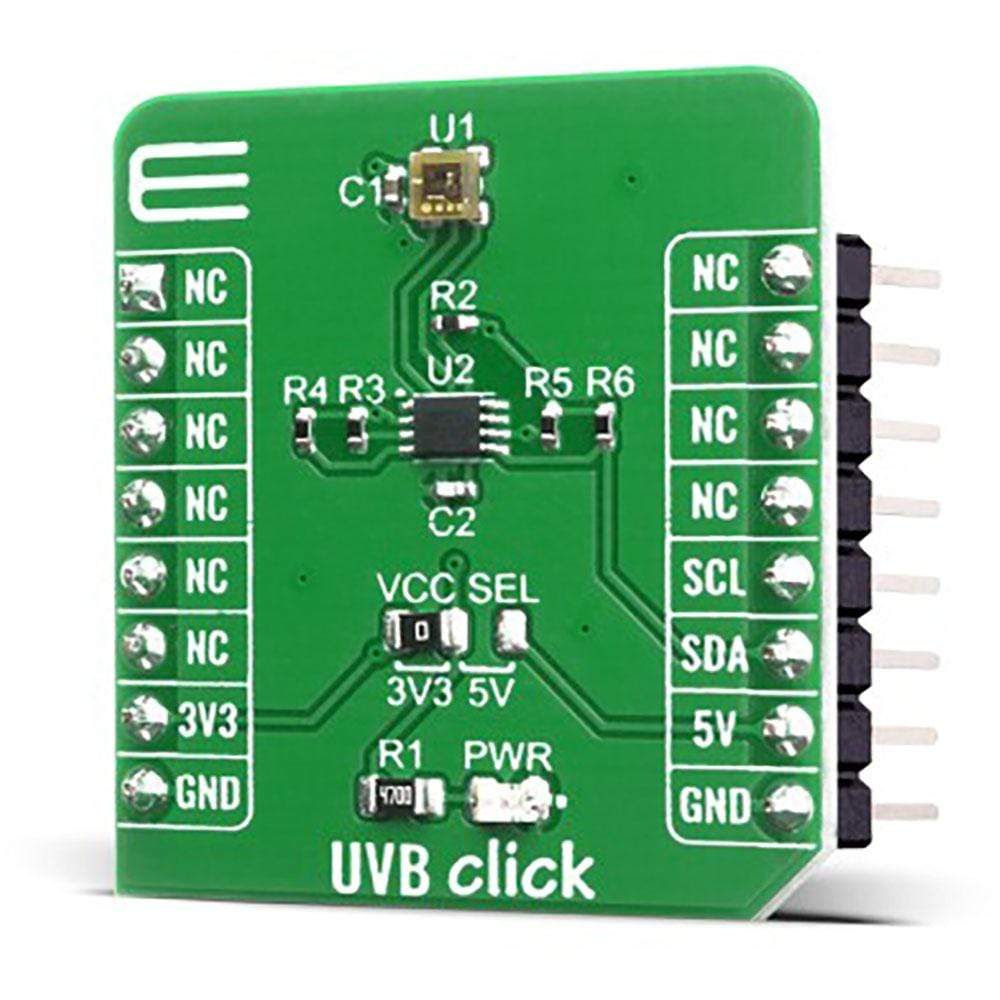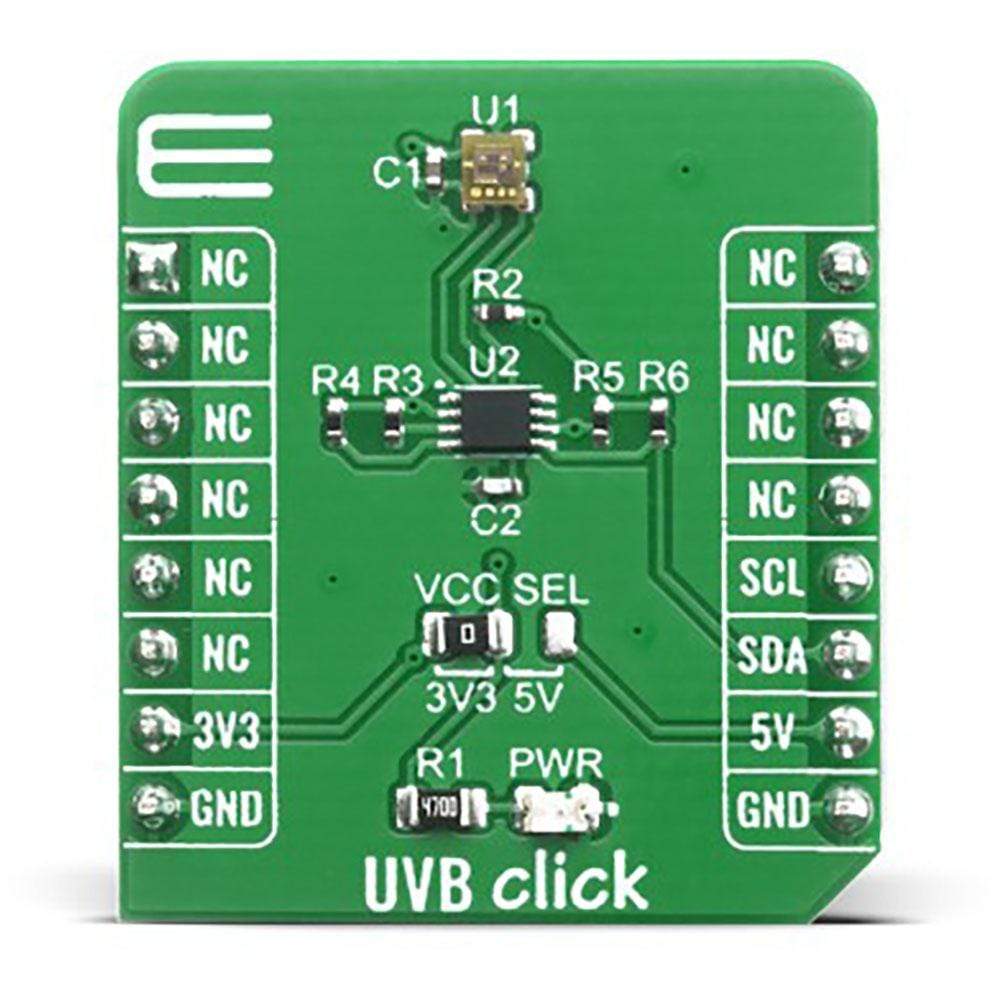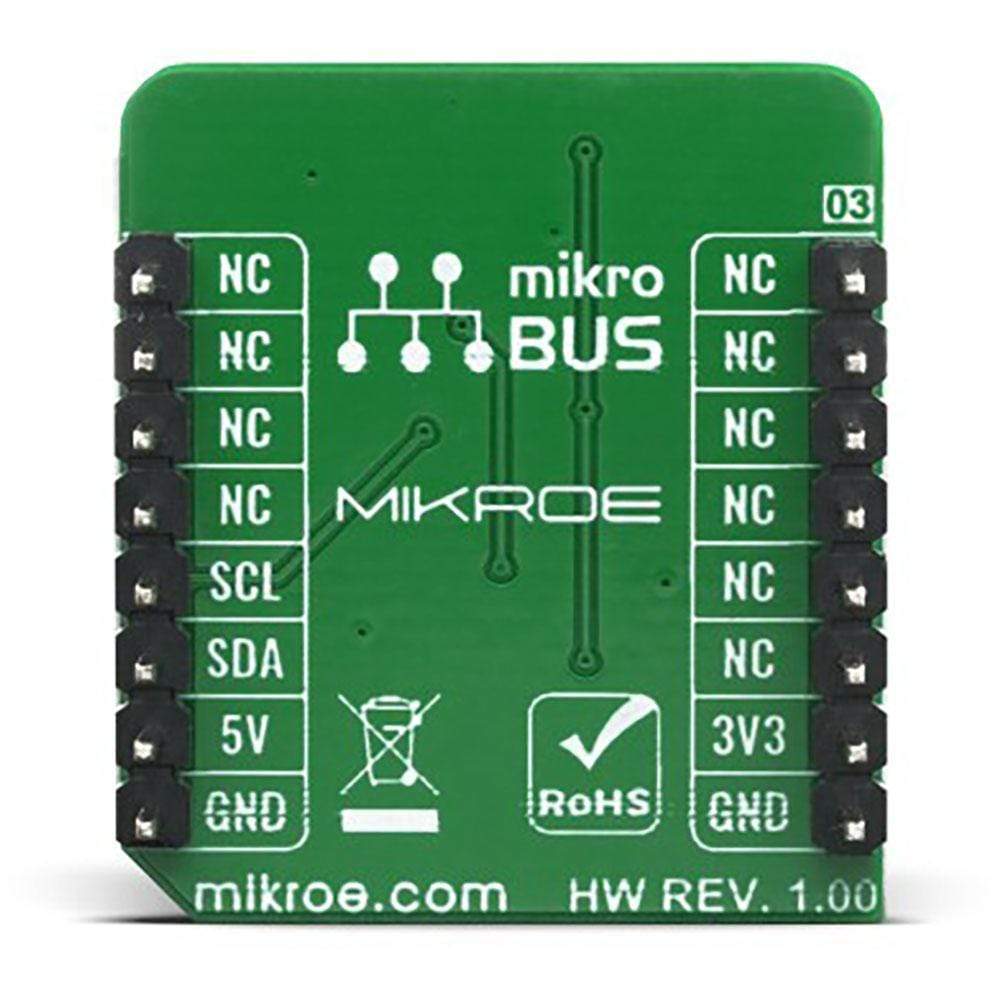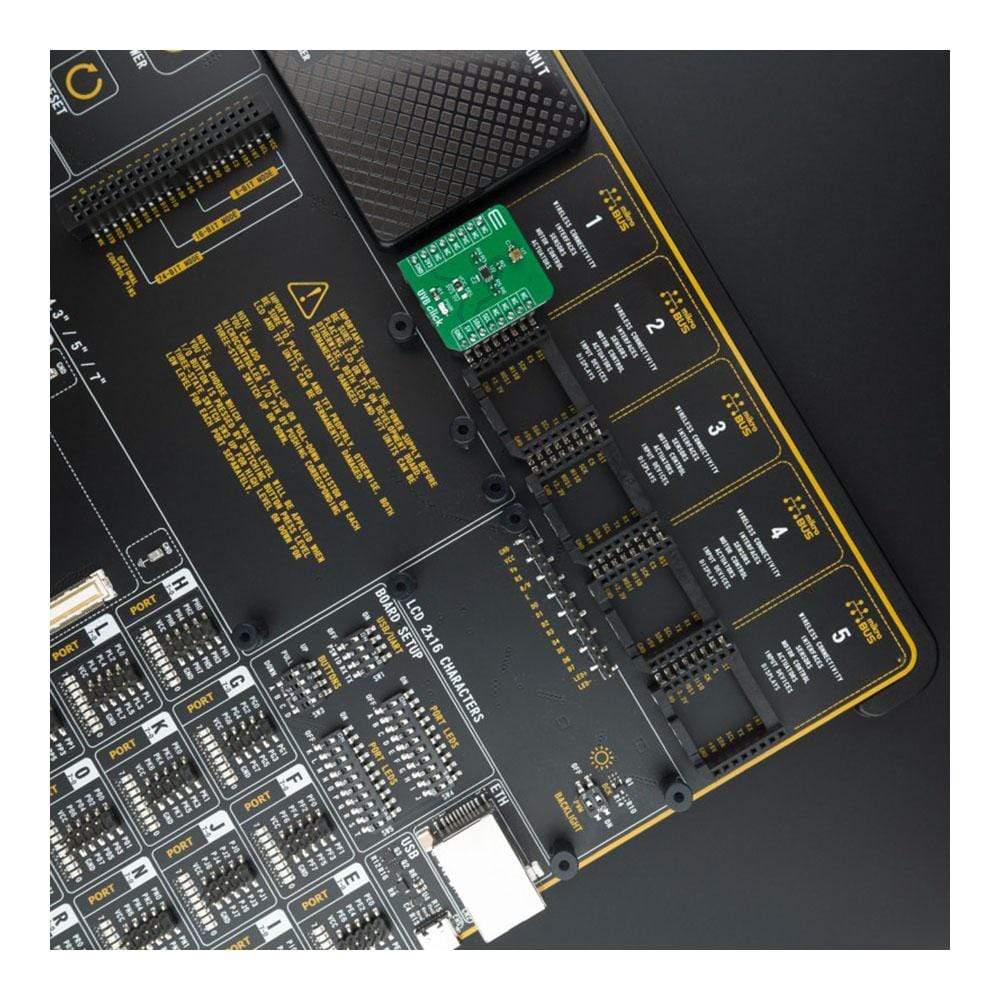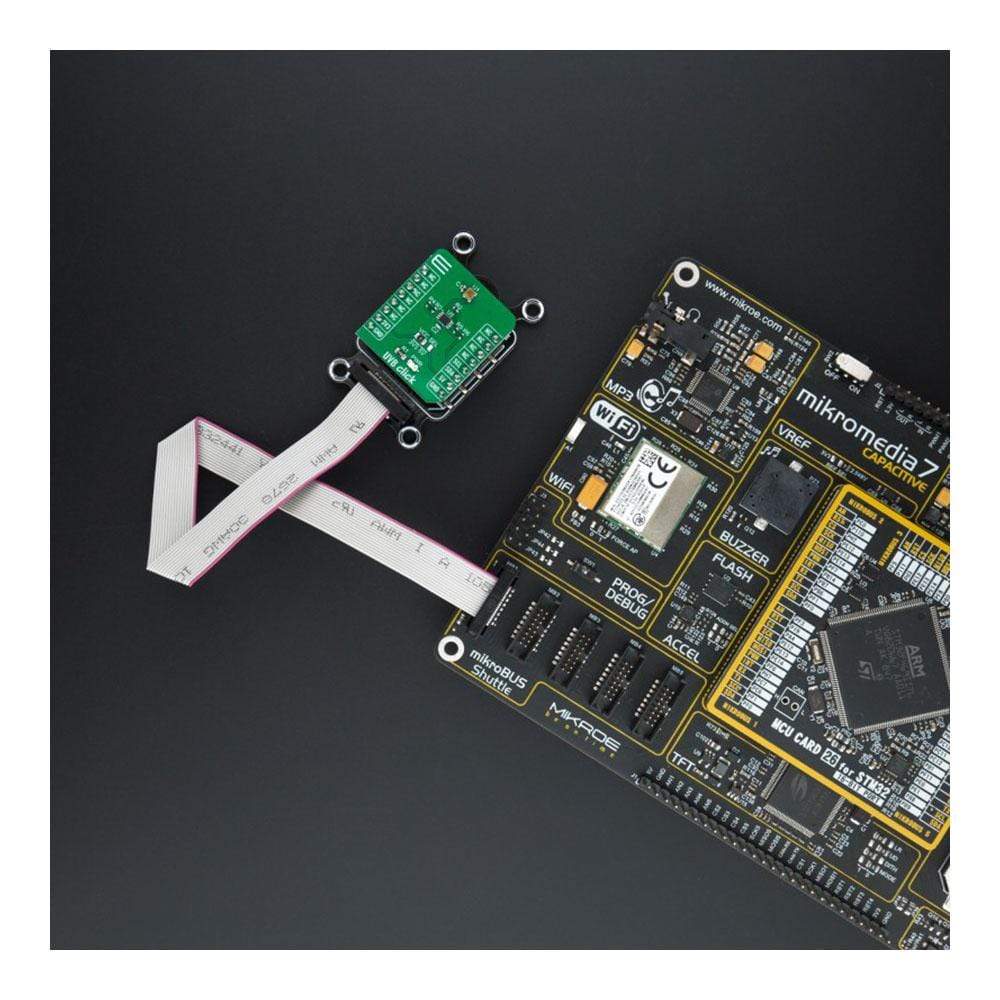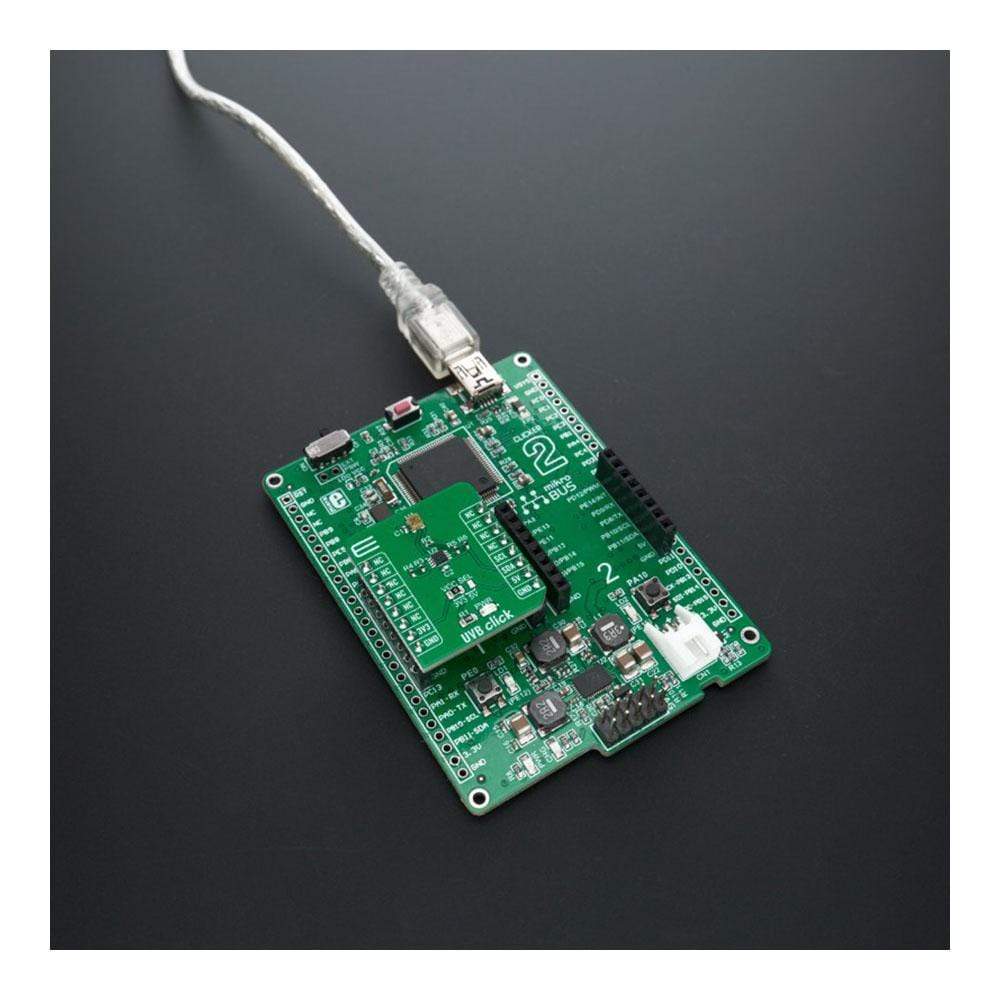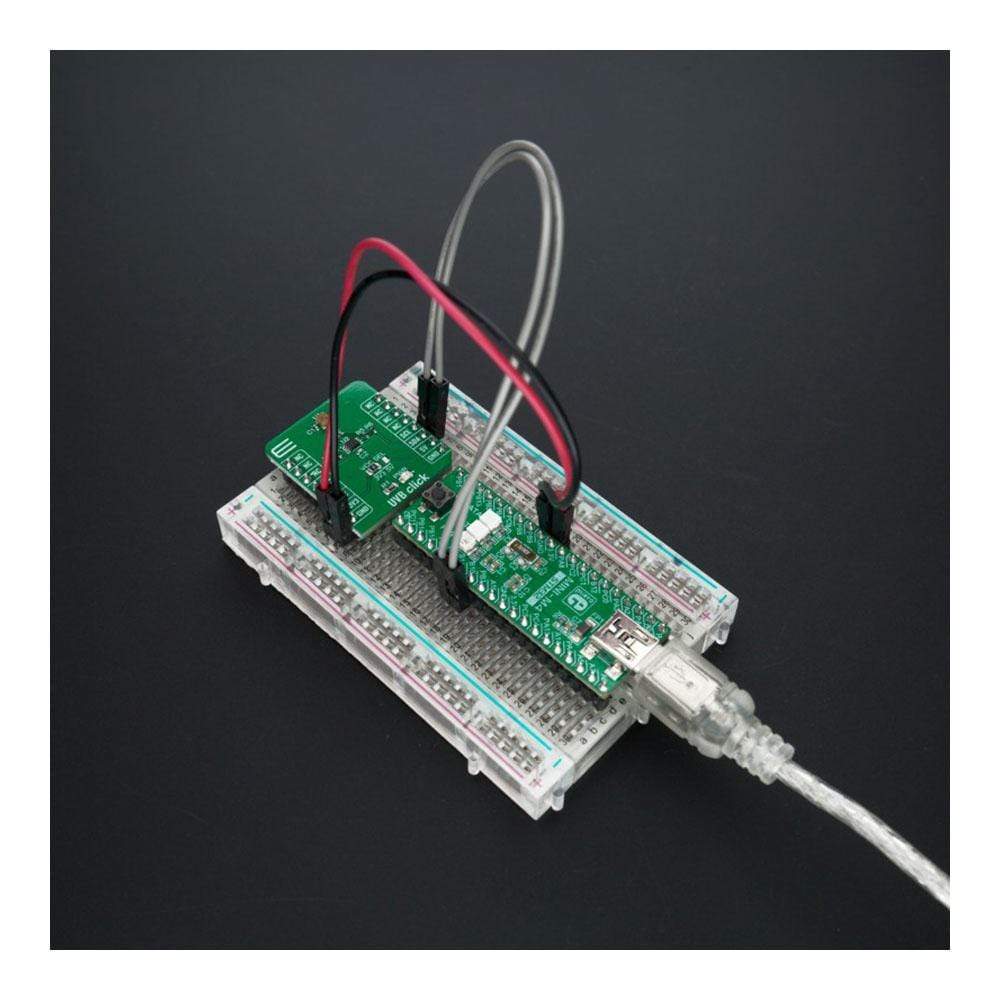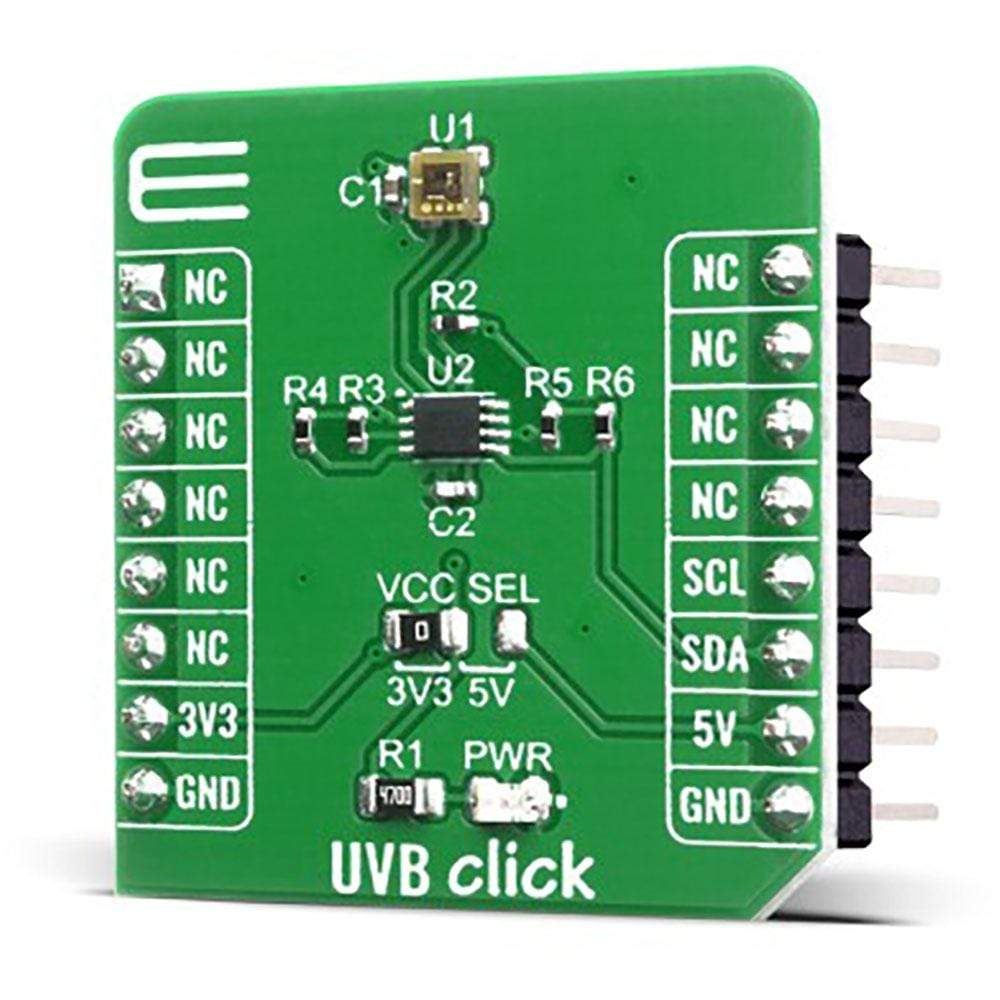
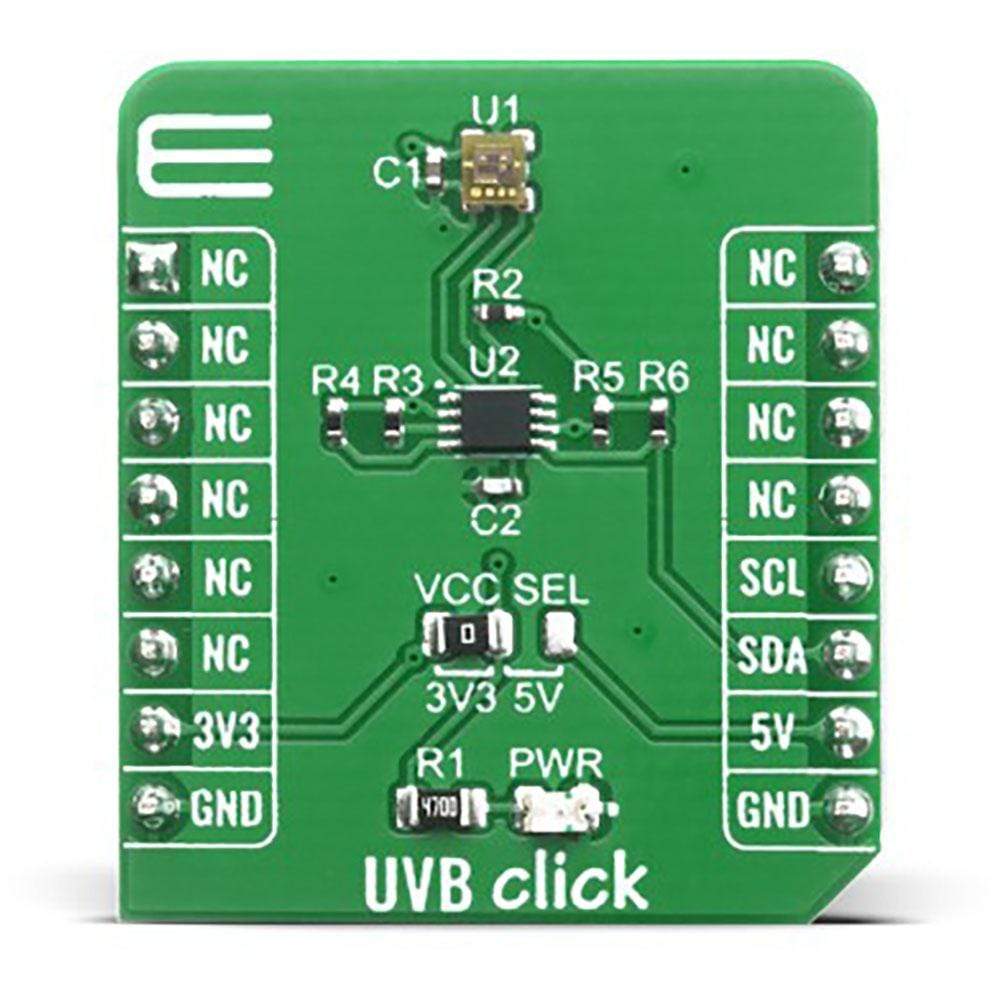
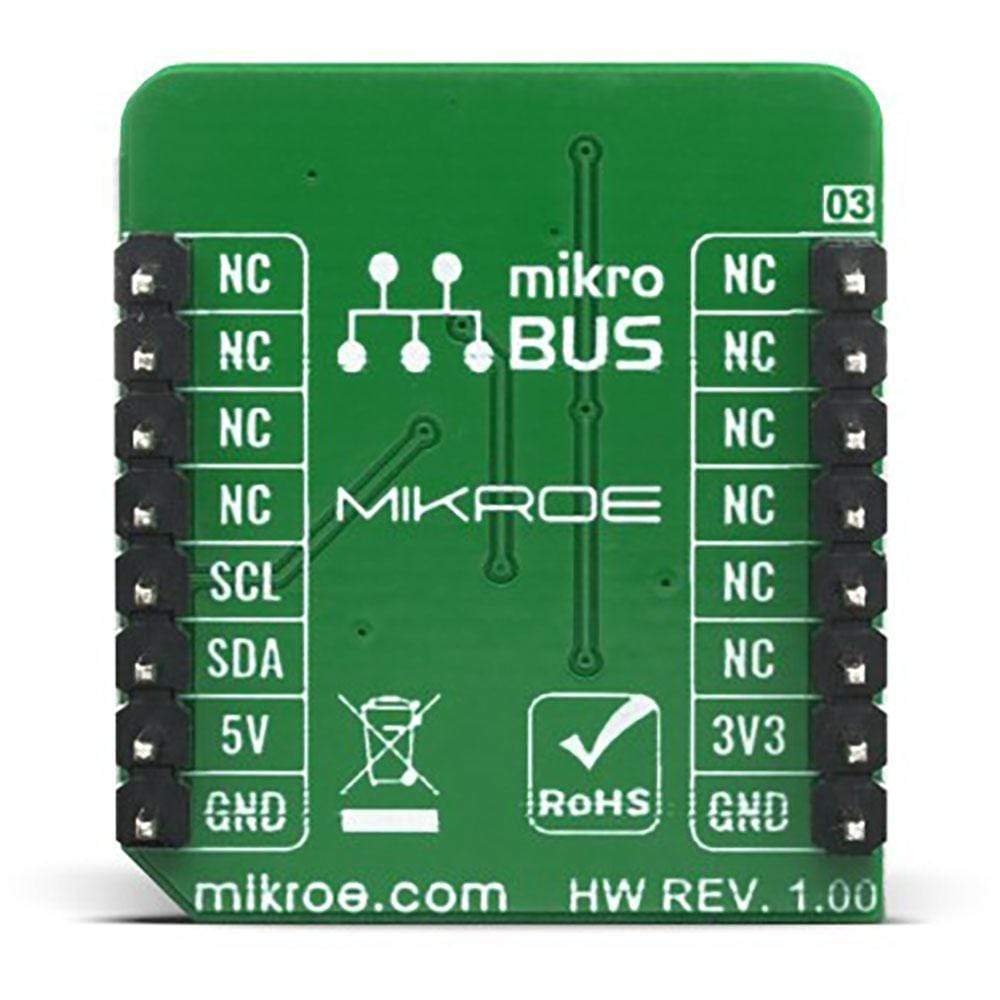
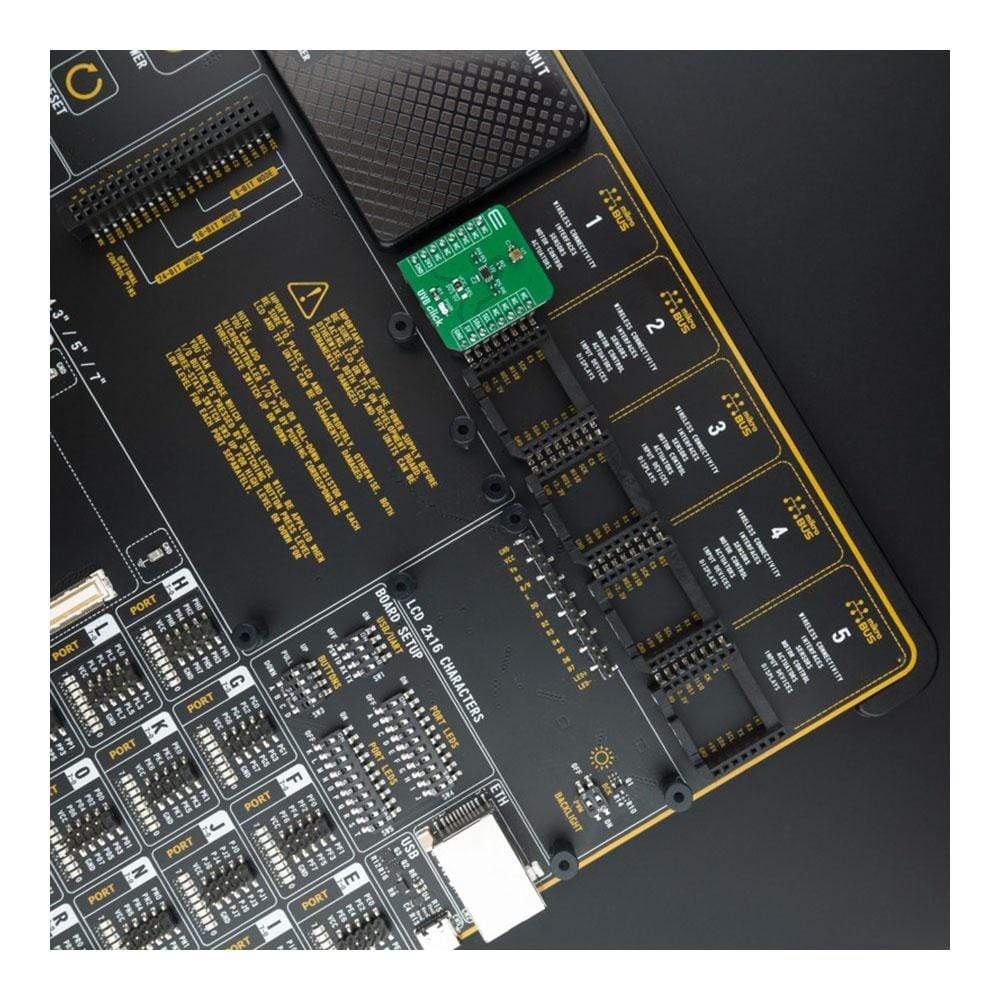
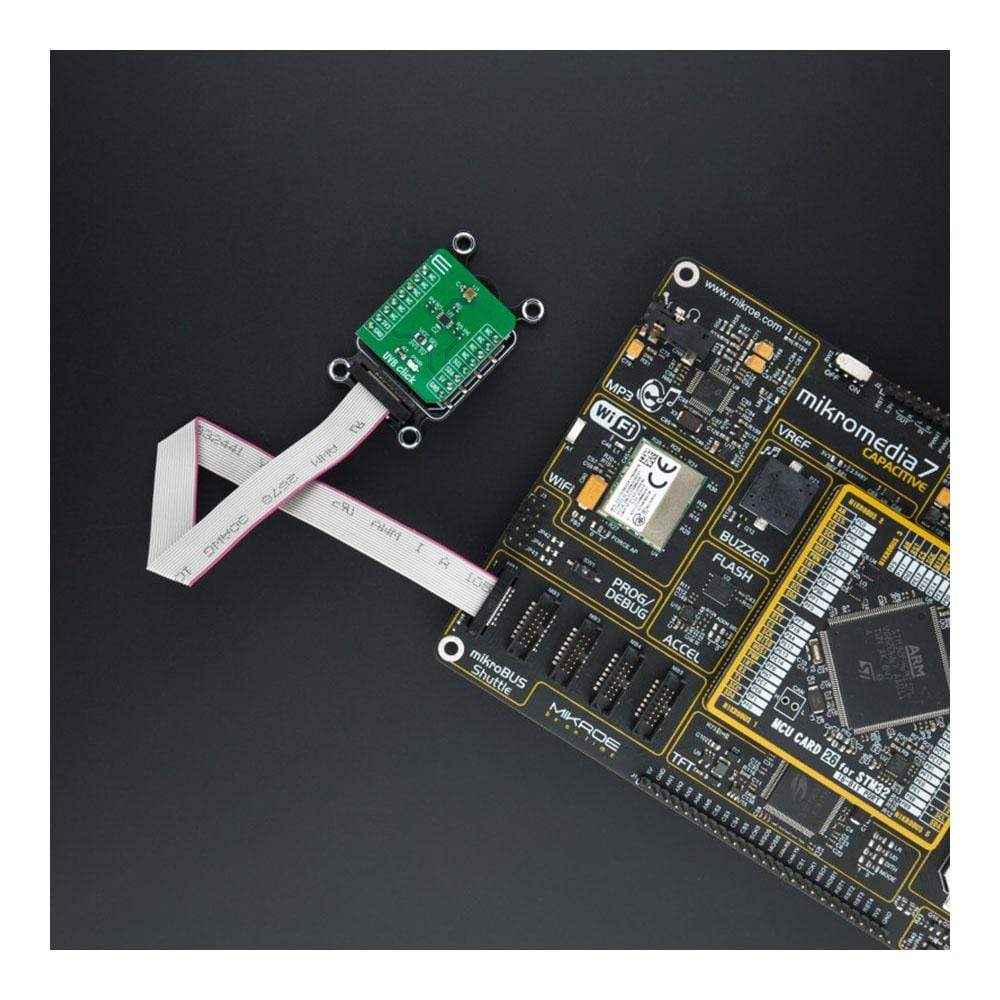
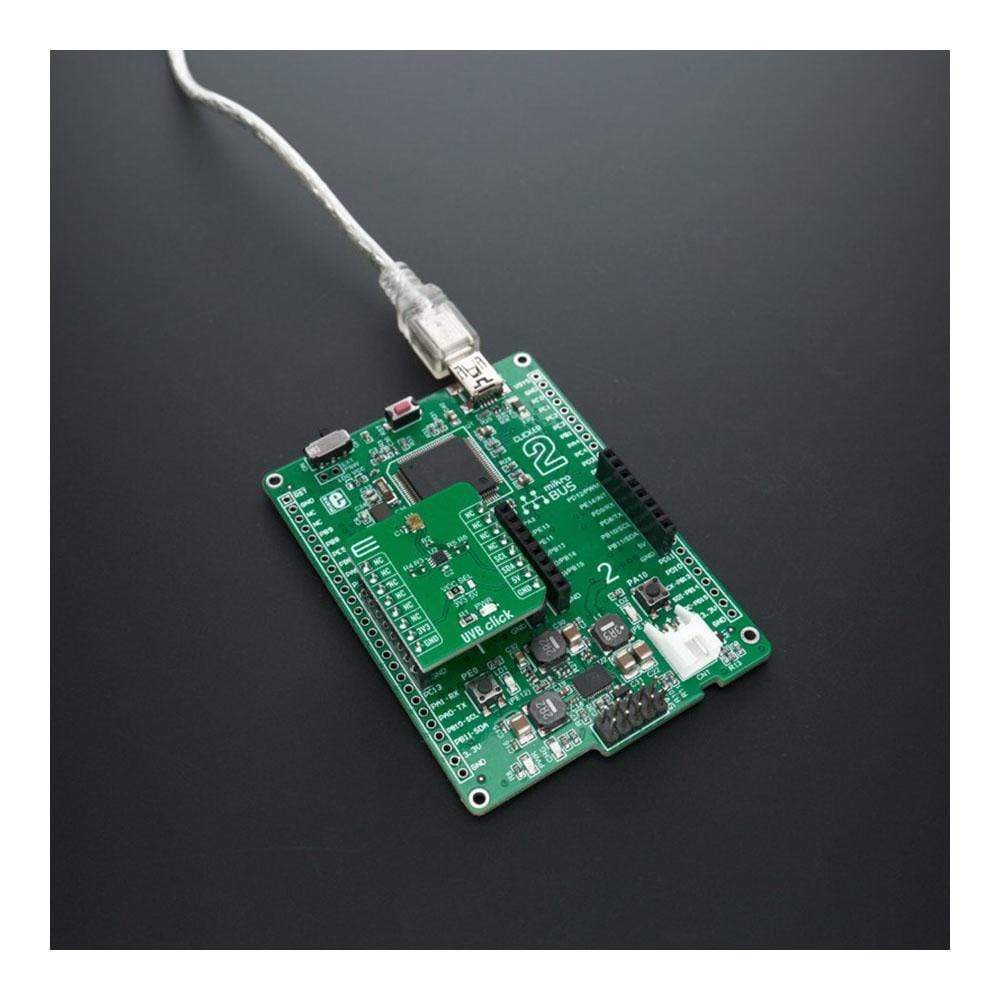

Overview
The UVB Click Board™ is an ultraviolet sensing board based on GUVB-C31SM sensor from GenUV, capable of measuring UV index between 0 to 16. UVB Click supports integrated functions of ultraviolet light sensors that can be easily configured and used in user applications. Overexposure to UVB radiation not only can cause sunburn but also some forms of skin cancer, so knowing the amount of UVB light can be quite important and this Click Board™ is the perfect solution for that task. This board can be used for various applications where measuring UV light is needed such as wearable devices, weather stations, bicycle navigation and many more.
The UVB Click Board™ is supported by a mikroSDK compliant library, which includes functions that simplify software development. This Click Board™ comes as a fully tested product, ready to be used on a system equipped with the mikroBUS™ socket.
Downloads
How Does The UVB Click Board™ Work?
The UVB Click Board™ is based on the GUVB-C31SM, a Digital UV Sensor from GENUV Technology. The sensor detects UVB light, as it includes on-chip GaN Sensors for UVB. The current generated by photo detectors is converted and measured by ADC and changed to 16-bit resolution digital data. The measured data can be delivered to host via I2C serial interface. Spectral responsivity of sensor is from 240nm up to 320nm which covers full range of UVB spectrum that's defined as light with wavelength from 280nm up to 315nm.
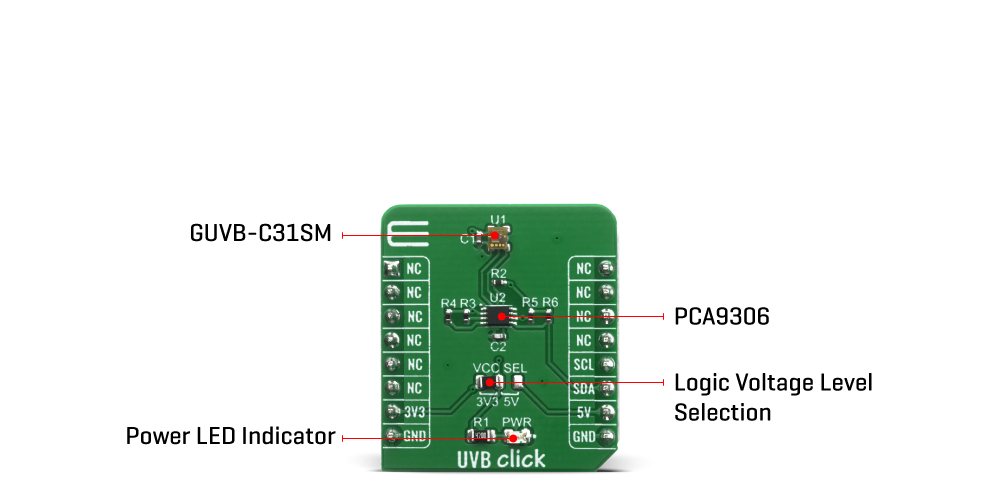
The atmosphere blocks about 77% of the Sun's UV, of the ultraviolet radiation that reaches the Earth's surface, more than 95% is the longer wavelengths of UVA, with the small remainder UVB. Overexposure to UVB radiation not only can cause sunburn but also some forms of skin cancer. UVB radiation can cause direct DNA damage. This cancer connection is one reason for concern about ozone depletion and the ozone hole.
One of the benefits of UV light is that it causes the body to produce vitamin D (specifically, UVB), which is essential for life. The human body needs some UV radiation to maintain adequate vitamin D levels; however, excess exposure produces harmful effects that typically outweigh the benefits. With all of this in mind it's very useful to know the amount of UVB radiation that you are exposed to, and the UVB Click Board™ is perfect solution for such purpose, and perfect tool for developing wearable devices or weather stations that can report amount of UVB light intensity.
Since sensor is supplied with 3.3V only, also featured on the UVB Click Board™ is voltage level shifter. For the level shifting, the PCA9306 dual bidirectional I2C bus and SMBus voltage level shifter is used. This level shifter IC allows shifting (converting) the I2C signal levels to the voltage level selected by the VCC SEL onboard SMD jumper. This allows both 3.3V and 5V capable MCUs to be interfaced with the UVB Click board™.
SPECIFICATIONS
| Type | Optical |
| Applications | It can be used for UV measurement applications, sun exposure protection devices, prototyping of wearables, handsets, and various consumer electronics based on received UV light |
| On-board modules | GUVB-C31SM |
| Key Features | UVB sensing with 16-bit resolution, Support UV index measurement (0~16), Response at only UV range |
| Interface | I2C |
| Compatibility | mikroBUS |
| Click board size | S (28.6 x 25.4 mm) |
| Input Voltage | 3.3V or 5V |
PINOUT DIAGRAM
This table shows how the pinout on UVB Click corresponds to the pinout on the mikroBUS™ socket (the latter shown in the two middle columns).
| Notes | Pin |  |
Pin | Notes | |||
|---|---|---|---|---|---|---|---|
| NC | 1 | AN | PWM | 16 | NC | ||
| NC | 2 | RST | INT | 15 | NC | ||
| NC | 3 | CS | RX | 14 | NC | ||
| NC | 4 | SCK | TX | 13 | NC | ||
| NC | 5 | MISO | SCL | 12 | SCL | I2C Clock | |
| NC | 6 | MOSI | SDA | 11 | SDA | I2C Data | |
| Power Supply | 3.3V | 7 | 3.3V | 5V | 10 | 5V | Power Supply |
| Ground | GND | 8 | GND | GND | 9 | GND | Ground |
ONBOARD SETTINGS AND INDICATORS
| Label | Name | Default | Description |
|---|---|---|---|
| PWR | LD1 | - | Power LED Indicator |
| VCC SEL | JP1 | Left | Logic level voltage selection: left position 3V3, right position 5V |
TECHNICAL SPECIFICATION
| Characteristic | Value |
|---|---|
| UVB sensing resolution | 16-bit |
| UV index measurement | 0~16 |
| Spectral responsivity | 240nm - 320nm |
| General Information | |
|---|---|
Part Number (SKU) |
MIKROE-4145
|
Manufacturer |
|
| Physical and Mechanical | |
Weight |
0.017 kg
|
| Other | |
Country of Origin |
|
HS Code Customs Tariff code
|
|
EAN |
8606018717644
|
Warranty |
|
Frequently Asked Questions
Have a Question?
Be the first to ask a question about this.

